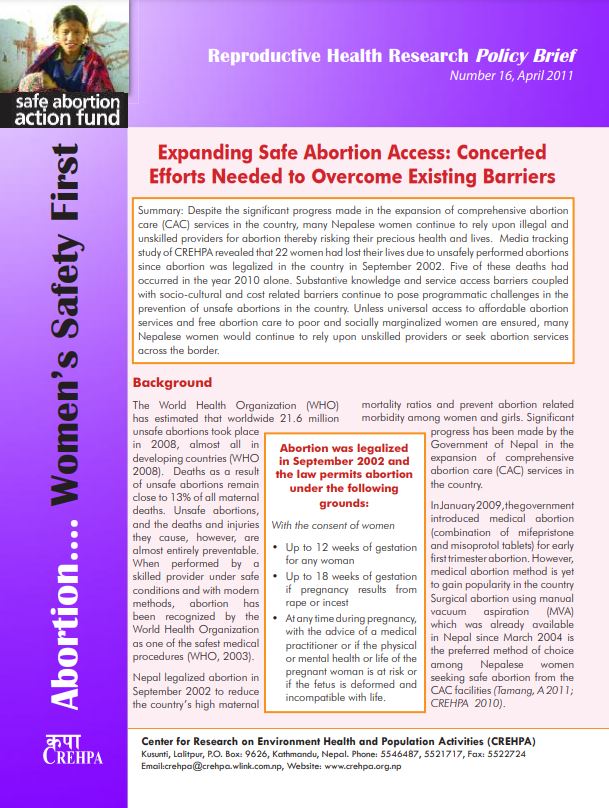Research
Reproductive Health Research Policy Brief
Database Category:
Research
Publisher:
Center for Research on Environment Health and Population Activities (CREHPA)
Published Date:
2011
Level:
National
Summary
Background
The World Health Organization (WHO) has estimated that worldwide 21.6 million unsafe abortions took place in 2008, almost all in developing countries (WHO 2008). Deaths as a result of unsafe abortions remain close to 13% of all maternal deaths. Unsafe abortions, and the deaths and injuries they cause, however, are almost entirely preventable. When performed by a skilled provider under safe conditions and with modern methods, abortion has been recognized by the World Health Organization as one of the safest medical procedures (WHO, 2003). Nepal legalized abortion in September 2002 to reduce the country’s high maternal mortality ratios and prevent abortion related morbidity among women and girls. Significant progress has been made by the Government of Nepal in the expansion of comprehensive abortion care (CAC) services in the country. InJanuary2009,thegovernment introduced medical abortion (combination of mifepristone and misoprotol tablets) for early first trimester abortion. However, medical abortion method is yet to gain popularity in the country Surgical abortion using manual vacuum aspiration (MVA) which was already available in Nepal since March 2004 is the preferred method of choice among Nepalese women seeking safe abortion from the CAC facilities(Tamang, A 2011; CREHPA 2010).
